During the trial, the Northrop Grumman Airborne Gateway connected the fifth-generation F-35B, which communicates using the ‘stealthy’ Multifunction Advanced Data Link (MADL), and the fourth-generation Typhoon, by translating MADL messages to Link 16 format.
This is the first time non-US fifth and fourth-generation aircraft have shared MADL delivered data and is an important demonstration of interoperability as the UK moves closer to initial operating capability of its F-35 Lightning II Force in late 2018.
The two-week trial, named Babel Fish III was funded by the Ministry of Defence and was conducted in airspace above the upper Mojave Desert, California, as part of the RAF’s Exercise High Rider.
Link 16 is the US and NATO military tactical data link used by some military aircraft, ships and ground forces to communicate and exchange tactical data. The F-35 and the Typhoon can communicate directly via Link 16 but previously could not communicate or share certain fifth-generation information.
According to a press release we recieved:
“During the trial, the Northrop Grumman Airborne Gateway connected the fifth-generation F-35B, which communicates using the stealthy Multifunction Advanced Data Link, and the fourth-generation Typhoon, by translating MADL messages to Link 16 format. Link 16 is the U.S. and NATO military tactical data link used by some military aircraft, ships and ground forces to communicate and exchange tactical data.
The F-35 and the Typhoon can communicate directly via Link 16 but previously could not communicate or share certain fifth-generation information.”
Andrew Tyler, chief executive, Northrop Grumman Europe said:
“Being able to network sensor data between fifth-generation and fourth-generation fast-jets and other battlespace assets in a stealthy manner is critically important to enabling the full capability offered by fifth-generation aircraft.
We are pleased to have played our part in this successful trial, the output of which will help the MOD to broaden its understanding of the effect that can be generated by its fifth-generation combat-air fleet.”
Air Commodore Linc Taylor Senior Responsible Owner for the UK’s F-35 Programme said:
“I have been enormously impressed both by the collegiate effort to make the Babel Fish III trial happen so successfully, and the specific outcomes of the trial.
This marks another great step forward in interoperability between our fourth- and fifth- generation aircraft, putting the RAF at the forefront of this work. We plan to continue to understand and develop where the most capability and interoperability benefit lies through a series of future trials along similar lines.”
According to the company:
“Bridging this fifth-to-fourth generation platform interoperability gap was made possible by the inclusion of a Northrop Grumman Freedom 550™ software-defined radio in the Airborne Gateway.
The Freedom 550™ is derived from the integrated communications, navigation and identification avionics suite the company developed and manufactures for the F-35; it was validated under the Jetpack Joint Capability Technology Demonstration programme, an effort sponsored by the Office of the Secretary of Defense and U.S. Air Force that concluded in 2014.
Northrop Grumman’s Airborne Gateway translates and relays information from various sources across diverse platforms and domains to enhance interoperability, situational awareness, communications and coordination for warfighters in the air, on the ground and at sea. The system is derived from the combat-proven airborne communications node that Northrop Grumman provides to the U.S. Air Force.”
F-35 aircraft have also successfully passed target data off to Typhoon jets who then successfully engaged the target during Exercise Red Flag.
The F-35 is designed to share what it sees with legacy aircraft. The US Air Force state that the lethality of the aircraft comes from ‘a combination of stealth, electronic attack, information sharing, and other features make the platform an invaluable part of a modern air-strike package.’
Col. George Watkins, 34th Fighter Squadron commander said:
“Our strength with the F-35 has been finding the threats.
We use our onboard system to geo-locate and get a picture of the target, day or night, through the weather. We pass that threat information to others while using our stealth capability. We can get a lot closer to the advanced threat than anyone else can get.
That allows us to target them out and take out critical assets.”
Lt. Col. Dave DeAngelis, F-35 pilot and commander of the 419th Operations Group said:
“During one scenario, the Airmen were given a general location by advanced intelligence, surveillance and reconnaissance aircraft. The F-35s were tasked with finding a convoy carrying a high-value target.
The F-35s advanced targeting capabilities were able to pinpoint the convoy’s location. They then communicated that to British Typhoon fighters who took out the target.
The thing that’s great about having Link 16 and MADL onboard and the sensor fusion is the amount of situational awareness the pilot has. I’m able to directly communicate with specific formations and I can see the whole war, and where all the other players are, from a God’s-eye view. That makes me a lot more effective because I know who to talk with and at what times, over the secure voice.”
The F-35 uses the Link 16 secure architecture to communicate with fourth-generation aircraft in the Red Flag fight and combined with the Multifunction Advanced Data Link, which allows pilots to see the battlespace and share that data with other F-35 pilots.
Using the F-35 as a broad area sensor can also significantly increase a warships ability to detect, track and engage a target.
An unmodified US Marine Corps F-35B from the Marine Operational Test and Evaluation Squadron, based in Edwards Air Force Base, acted as an elevated sensor to detect an over-the-horizon threat.
The aircraft then sent data through its Multi-Function Advanced Data Link to a ground station connected to USS Desert Ship, a land-based launch facility designed to simulate a ship at sea.
Using the latest Aegis Weapon System Baseline 9.C1 and a Standard Missile 6, the system successfully detected and engaged the target.
The exercise was the first live fire missile event that successfully demonstrated the integration of the F-35 to support Naval Integrated Fire Control-Counter Air and represent a very promising exploration into the interoperability of the F-35B with other naval assets.
The F-35 will drastically increase the situational awareness of the forces with which it will deploy and for the UK, where deployed numbers may be a concern, it represents a fantastic way to enhance combat capability in any coalition or national effort.





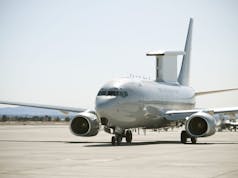

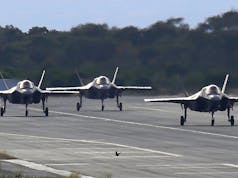
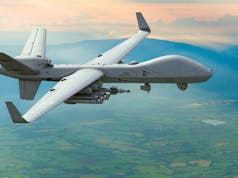
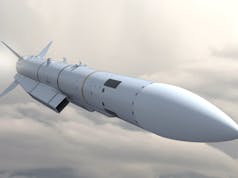

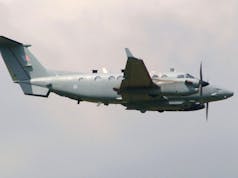

The article forgets to mention that Link 16 is not stealthy and its use immediately gives away the location of the transmitter. Which is why the F-35 has a new link.
Only trackable if you have an estars type airplane most foreign nations fo not have that level of technology although Russia and China are rushing to catch up with NATO in this area. It is only an issue if the transmissions are triangulated and the enemy has something that can tack on a Eurofighter and defeat it.